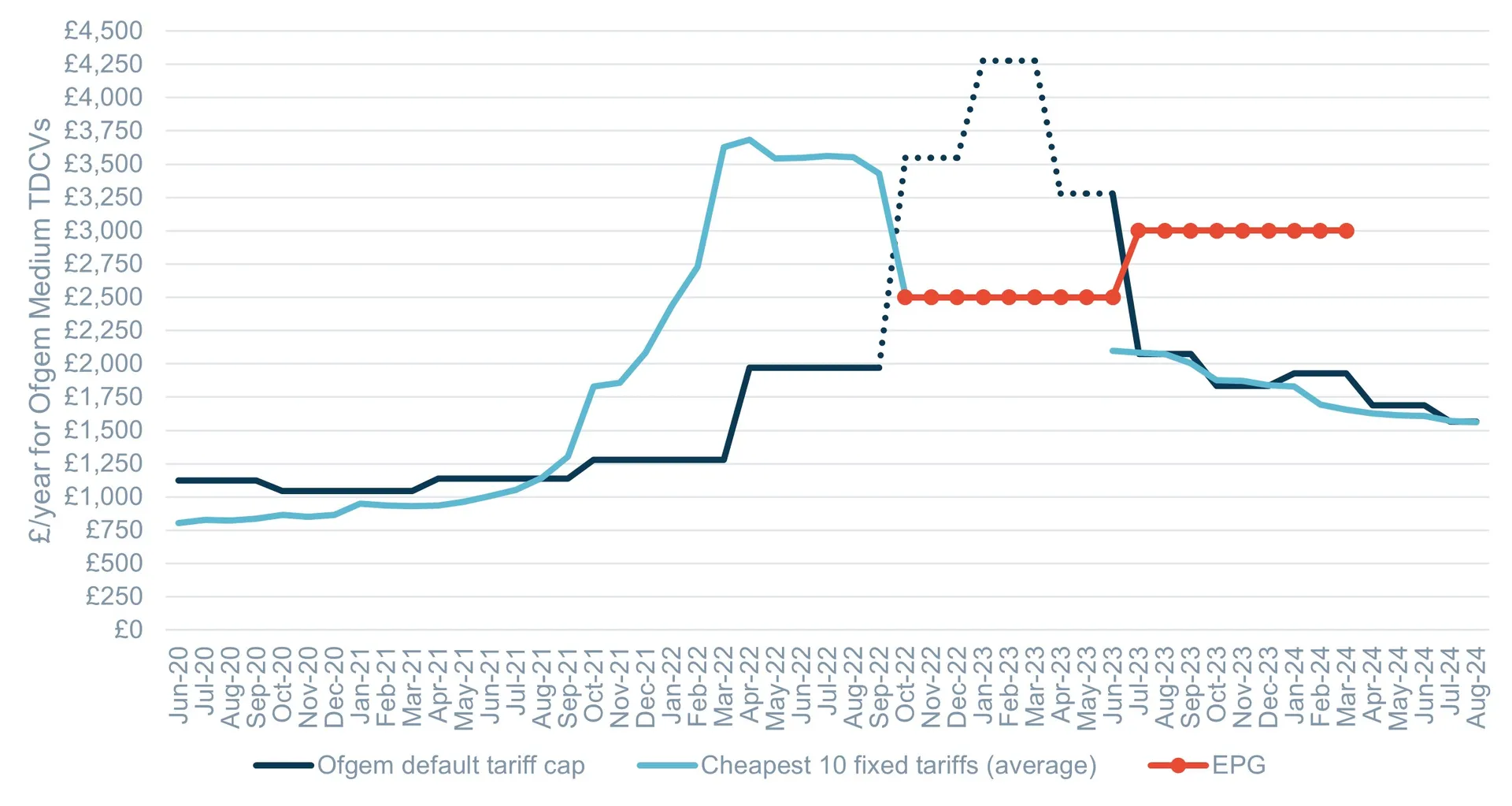"Earlier this year, there were glimpses of savings in the hundreds of pounds, but fixed tariffs have since crept back up to around the same annual cost as the price cap, and the current £5 difference is unlikely to be enough to motivate most people to switch. "
James Mabey Analyst
Analysis by Cornwall Insight has revealed that the average saving from the top ten cheapest fixed rate tariffs on the open market now stands at only £5 per annum, compared to being on the price cap. The data from the company’s August Fixed Domestic Tariff Report, shows there has been a drop off in savings over the past couple of months, with a typical1 customer previously able to save around £60 to £80 per year.
The low savings are partly due to forecasts of a price cap increase in October, with several lower-priced fixed tariffs leaving the market.
While the first quarter of 2024 saw a brief spike in savings to three figures - an anomaly due to unusually low wholesale prices and a relatively high price cap - fixed tariffs have struggled to offer substantial returns since the energy crisis began. Before the crisis, customers could consistently expect three-figure savings when switching to a fixed tariff.
Ofgem's recent decision to reverse its plan to remove the Ban on Acquisition Tariffs (BAT) — which bars suppliers from offering lower rates to new customers – could further impact those looking to switch and save. Critics of the row back argue that keeping the ban in place might stifle competition, particularly from smaller energy suppliers looking to gain a larger customer base, potentially slowing the return to lower prices. However, the plans to remove the BAT had faced strong industry opposition, with many contending the new customer tariffs would only be of benefit to customers who had the time, ability, and resources to engage in the energy market, potentially penalising customer loyalty.
**Figure 1: Price cap vs 10 cheapest fixed tariffs (average) **

*Excludes bundled, exclusive, or regional tariffs Source: Cornwall Insight
Figure 2: Average fixed tariff savings Aug 20 - Aug 21 vs average fixed tariff savings Aug 23 – Aug 24

Source: Cornwall Insight
James Mabey, Analyst at Cornwall Insight:
“For some time, people have been getting their hopes up about a return to significant fixed tariff savings. Unfortunately, the optimism may have been premature. Earlier this year, there were glimpses of savings in the hundreds of pounds, but fixed tariffs have since crept back up to around the same annual cost as the price cap, and the current £5 difference is unlikely to be enough to motivate most people to switch.
“The maintaining of the Ban on Acquisition Tariffs was a blow for households who actively engage in the energy market, as it could have led to higher introductory savings for those with the time and inclination to switch. On the other hand, lifting the ban could also have resulted in loyal customers being penalised, and vulnerable individuals, who may be less able to navigate the market, left with higher bills. Ultimately, there were always going to be winners and losers, no matter which direction Ofgem took.
“Whether the fixed tariff market will improve is up for debate, but based on our data, it is unlikely we will see a return to consistent three figure savings anytime soon.”
References:
- Based on Ofgem’s Typical Domestic Consumption Values (TDCVs), which are 2,700 kWh per annum for electricity, and 11,500 kWh per annum for gas.

